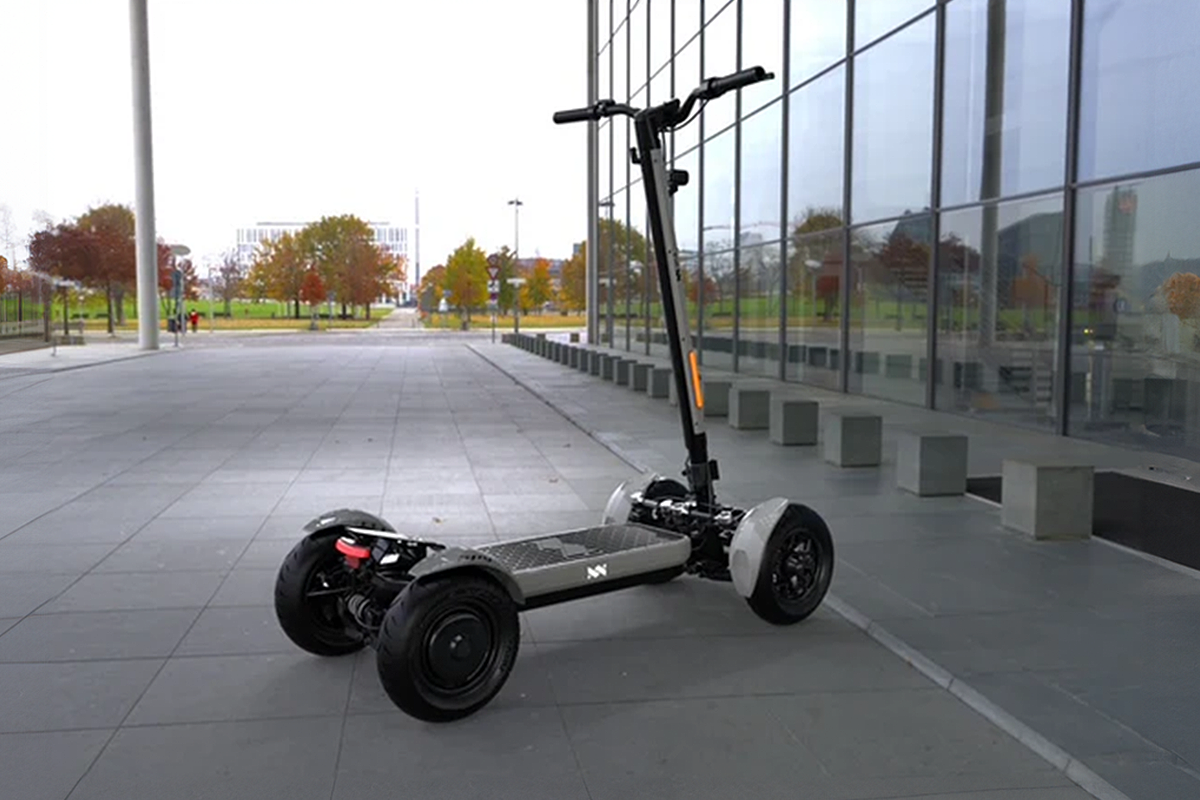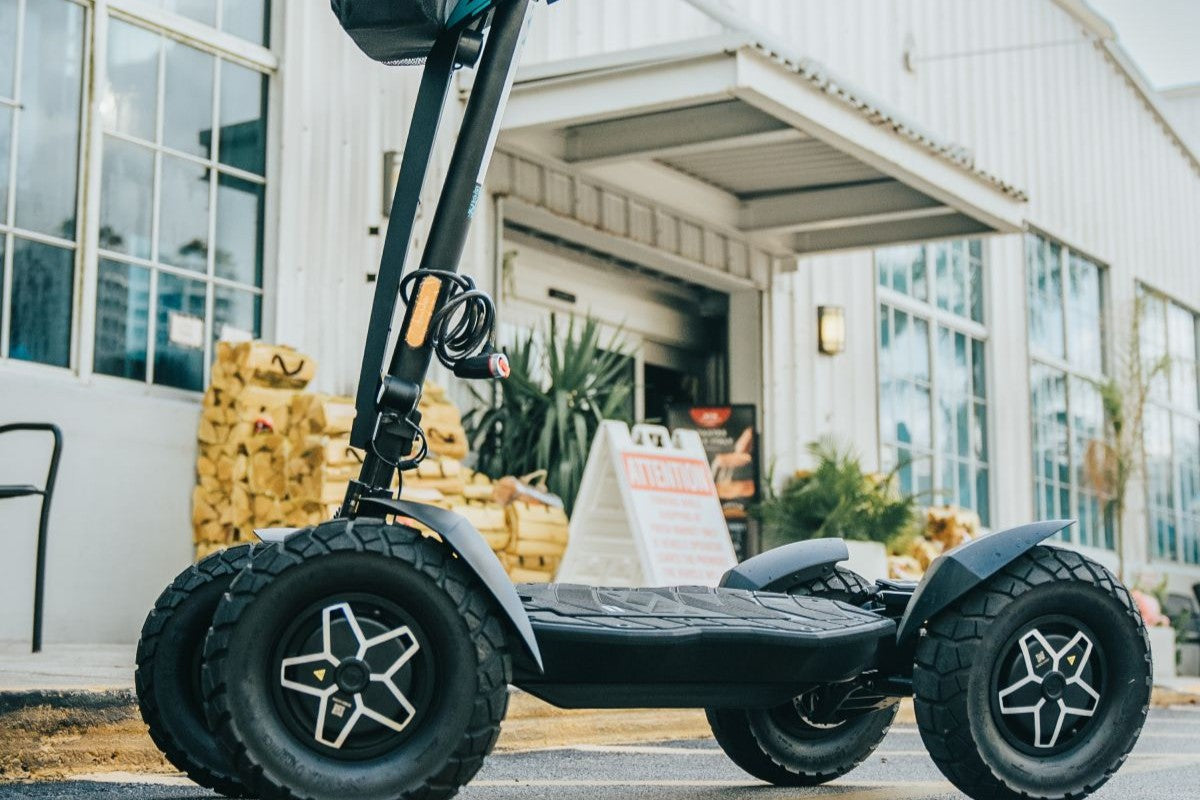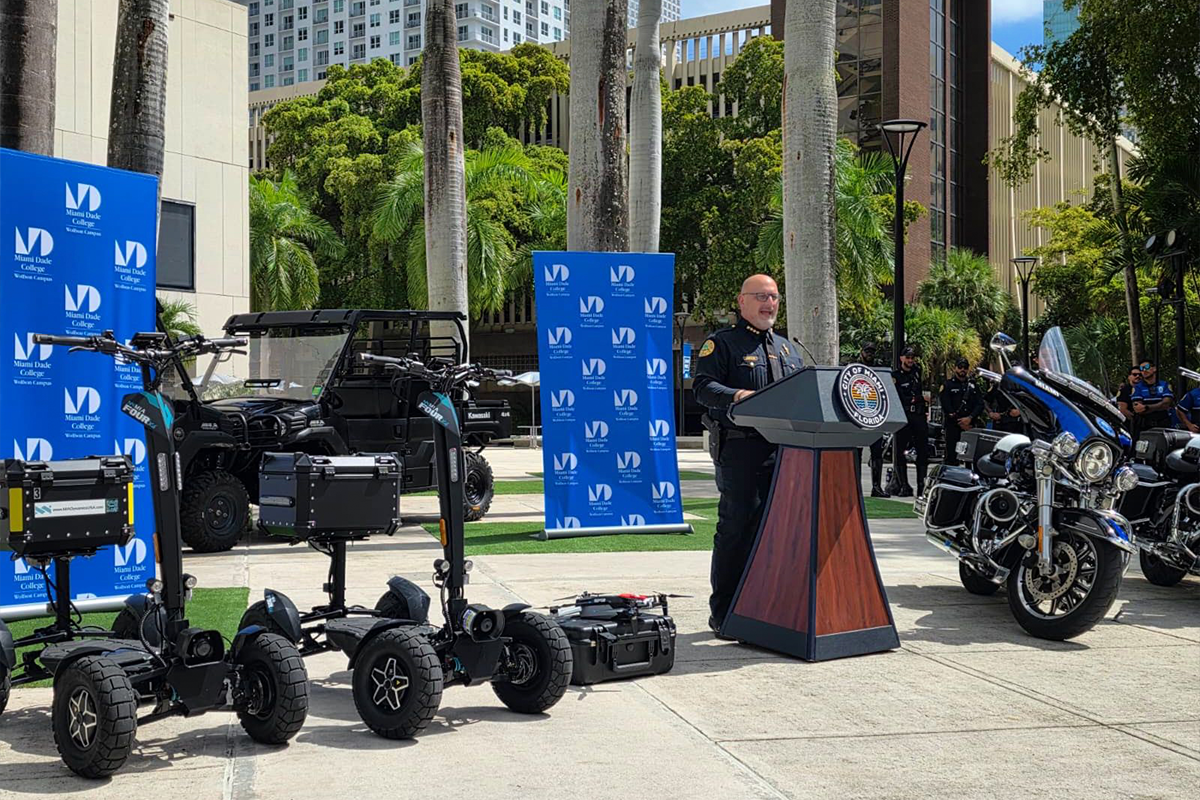You walk into a store, see 50 different electric scooters, and your brain melts. Which one actually works? Which one won't break after two weeks?
Here's the truth: most people waste $500-2000 on the wrong scooter because they don't know how to choose an electric scooter properly. But when you understand exactly what to look for, you'll find a scooter that transforms how you get around. Whether you're commuting to work, hitting trails, or starting a delivery business, we'll show you exactly how to pick the right one.
Know Your Riding Style First
Stop looking at random scooters and start with this question: how will you actually use it? Different riding styles require completely different features:
● Commuting to work: You need reliability, decent range, and something you can fold up without needing monster truck tires
● Weekend trail adventures: Forget about lightweight models and focus on tough suspension, fat tires, and serious power
● Delivery business: Durability beats everything else because you need something that won't die after 1000 miles
● Casual cruising: Keep it simple with basic features, reasonable price, and easy operation
Your riding style determines everything else, so get this wrong and you'll hate your purchase.
Best Electric Scooter for Commuting: City Riding Made Easy
City commuting is absolutely brutal on electric scooters, with traffic, potholes, stairs, and weather testing every single component on a daily basis. Range matters most because even if your commute is only 5 miles, you actually need 15+ mile range since hills drain batteries fast, cold weather kills performance, and traffic detours happen when you least expect them.
Weight affects your daily life in ways you might not consider initially. Carrying a 60-pound scooter upstairs gets old incredibly fast, so aim for under 40 pounds if you'll be lifting it regularly, though some ultra-light models sacrifice too much performance.
Essential commuting features include:
● 20+ mile real-world range for round trips with buffer
● 15-20 mph top speed (legal in most bike lanes)
● Under 40 pounds for easy carrying
● Reliable folding mechanism that locks securely
● Built-in lights and safety features
● Weather resistance for unexpected rain
Always test ride during your actual commute time because rush hour performance differs significantly from weekend test rides.
Best Electric Scooter for Adults: Power When You Need It
Adult riders demand real performance without toy-grade components or flimsy construction that breaks under normal use. Motor power determines your scooter's capability, where single motors work fine for flat areas and lighter riders, while dual motors handle hills, headwinds, and heavier loads without struggle.
Build quality separates actual transportation tools from toys, so look for reinforced aluminum frames, quality welds, and robust suspension systems. Cheap scooters use thin metal and poor welding that fails under normal stress, leaving you stranded or injured.
Adult-grade features to prioritize:
● Motor power: 500+ watts for hills, 1000+ for steep grades
● Frame construction: Reinforced aluminum or steel with quality welds
● Weight capacity: Well above your total weight including cargo
● Comfort features: Adjustable handlebars, padded grips, good suspension
● Tire quality: Pneumatic tires for smooth rides and better traction
● Advanced features: Smartphone connectivity, GPS tracking, performance modes
The best electric scooter for adults balances power, comfort, and durability because you're not buying a toy - you're investing in reliable transportation.
Best Off Road Electric Scooter: Trail Ready Performance
Off-road riding destroys weak scooters quickly, so you need components specifically designed for punishment and harsh conditions. Tire selection makes or breaks trail performance, where pneumatic tires with aggressive tread patterns grip loose surfaces effectively, while larger wheels (10+ inches) roll over obstacles easier.
Suspension becomes absolutely critical for off-road comfort and control since quality front and rear suspension absorbs impacts from rocks, roots, and drops while maintaining tire contact for better traction. Ground clearance prevents expensive damage by letting you ride over logs and rocks without scraping vulnerable components.
Off-road essential features:
● Tires: Pneumatic with aggressive tread, 10+ inch diameter
● Suspension: Quality front and rear with adjustable settings
● Ground clearance: High enough for logs and rocks
● Waterproofing: IP65+ rating for wet conditions
● Protection: Skid plates for vulnerable components
● Power: Higher torque motors for steep climbs
● Durability: Sealed bearings and corrosion-resistant materials
The best off road electric scooter requires pneumatic knobby tires, quality suspension, and weather-resistant construction. Don't expect trail performance from a lightweight commuter scooter.
Understanding Specs That Actually Matter
Marketing specifications lie constantly, so here's what really matters for real-world performance. Battery capacity measured in watt-hours (Wh) determines range, where more watt-hours equals longer range, but real range depends heavily on your weight, terrain, weather, and riding style.
Key specifications to understand:
● Battery capacity (Wh): Higher = longer range, but expect 20-30% less than advertised
● Motor power: Continuous power matters more than peak power marketing numbers
● Speed ratings: Often limited by local laws (15-20 mph in bike lanes)
● Weight capacity: Include your weight plus all cargo and gear
● Charging time: Faster charging = more convenient daily use
● Range factors: Hills, headwinds, cold weather all reduce actual range
Motor power affects hills and acceleration, where continuous power matters much more than peak power numbers that sound impressive in marketing. 500+ watts handles most hills with average-weight riders, while 1000+ watts tackles steep grades and heavy loads reliably.
Safety and Legal Stuff You Can't Ignore
Quality brakes literally save lives, where disc brakes work reliably in all conditions while electronic regenerative braking helps but isn't sufficient alone. Avoid scooters with only basic caliper brakes since they fail when you need stopping power most.
Safety features that matter:
● Braking systems: Quality disc brakes plus regenerative braking
● Lighting: Built-in front/rear lights, turn signals for traffic
● Visibility: Reflective elements and bright colors
● Horn/bell: Audible warning for pedestrians
● Weather resistance: Protection from rain and moisture
Local laws vary wildly between jurisdictions, with speed limits usually running 15-20 mph, some areas limiting motor power, helmet requirements differing by location, and legal riding areas varying significantly. Research your specific local laws before buying since some scooters are completely illegal in certain areas.
Insurance considerations matter more than most people realize, so check if your existing insurance covers e-scooter accidents and consider additional coverage for expensive scooters.
Budget Reality Check
Understanding price ranges helps set realistic expectations and find the best value for your needs:
● Under $500: Basic transportation for short distances and light use, often lacks durability
● $500-1500: Sweet spot with good performance, features, and reliability for most riders
● $1500-3000: Premium performance with top components and advanced features
● $3000+: Enthusiast territory with maximum performance, often overkill for most people
Total ownership costs include much more than initial purchase price:
● Initial purchase and financing costs
● Helmet and safety gear requirements
● Regular maintenance and repairs
● Battery replacement every 2-5 years
● Insurance and registration where required
● Accessories like locks and storage
Cheap scooters often cost more long-term due to frequent repairs and early replacement needs, making mid-range models better value for serious use.
How to Choose an Electric Scooter: Decision Framework
How to choose an electric scooter without getting overwhelmed starts with honestly defining your needs, including primary use, typical distances, terrain, and realistic budget constraints. Follow this systematic approach:
Step 1: Define requirements
● Primary use case (commuting, recreation, business)
● Daily distance and terrain type
● Portability and storage needs
● Budget including accessories and maintenance
Step 2: Research thoroughly
● Read verified user reviews from multiple sources
● Check professional test results and comparisons
● Verify warranty terms and what they actually cover
● Confirm local dealer support and parts availability
Step 3: Test before buying
● Rent similar models when possible
● Test ride at dealers during actual use conditions
● Check comfort, handling, and folding mechanisms
● Verify performance meets your expectations
Step 4: Calculate total costs
● Purchase price plus necessary accessories
● Ongoing maintenance and repair expenses
● Battery replacement costs and timeline
● Insurance and registration requirements
Research intelligently by reading user reviews while ignoring obvious fake reviews, checking professional test results from reputable sources, and confirming local dealer support for service and parts.
Maintenance Reality
Battery care determines lifespan more than any other factor, where proper charging habits can extend battery life from 2-3 years to 4-5 years or more. Avoid completely draining batteries, store in moderate temperatures, and follow manufacturer charging guidelines religiously.
Regular maintenance tasks:
● Weekly: Check tire pressure and inspect for damage
● Monthly: Tighten bolts and hardware, clean contacts
● Seasonally: Deep clean, lubricate moving parts, brake inspection
● Annually: Professional tune-up and component replacement
Parts availability varies hugely between manufacturers, where popular brands offer better long-term support while obscure brands might leave you stuck with expensive paperweights when components fail. Winter storage protects your investment by preventing battery damage and corrosion during off-season storage.
Making Your Final Decision with This Electric Scooter Buying Guide
Start with your actual needs rather than dream scenarios since most people overestimate their requirements and buy more scooter than they'll actually use. Mid-range models often provide the best value because technology evolves quickly, making buying for current needs usually better than expensive future-proofing.
Final decision factors:
● Match features to actual use patterns, not wishful thinking
● Consider resale value and brand reputation
● Factor in local service and parts availability
● Budget for accessories and ongoing costs from day one
● Choose reliability over flashy features for daily use
Don't forget about accessories since you'll definitely need a quality helmet, lock for security, storage solutions, and weather protection, all of which add significant cost to your initial investment.
Ready to Buy Your Perfect Scooter?
Start by honestly evaluating how you'll actually use your scooter rather than how you imagine you might use it. Skip the features you don't actually need and focus on reliability and performance for your specific situation and riding conditions.
For high-performance options with proven reliability, check out our complete scooter collection featuring models designed for serious riders who demand quality and performance. Our Mia Four X4 delivers four-wheel drive performance for riders who demand maximum capability and control in challenging conditions.
Need help choosing the right model for your specific needs and riding style? Contact our team for personalized recommendations based on your unique requirements and local conditions.
The right electric scooter changes how you move through the world, so choose wisely and enjoy the ride.
Frequently Asked Questions
What should I look for in an electric scooter buying guide?
A good electric scooter buying guide focuses on your specific use case rather than generic features, addressing your riding style, local laws, and real-world performance expectations instead of marketing hype.
How much should I spend on the best electric scooter for adults?
The best electric scooter for adults typically costs $800-2000 for reliable daily use, with cheaper options working for occasional riding and premium models above $2000 offering top performance for serious riders.
What makes the best electric scooter for commuting?
The best electric scooter for commuting needs reliable range for your daily distance, appropriate speed for traffic conditions, easy portability for multi-modal transport, and safety features for urban riding while prioritizing practicality over flashy features.
How do I find the best off road electric scooter?
The best off road electric scooter requires pneumatic knobby tires, quality suspension, high ground clearance, and weather-resistant construction, so don't expect trail performance from street-oriented models.
What's most important when learning how to choose an electric scooter?
When learning how to choose an electric scooter, start with your primary use case and typical riding distance since these factors determine necessary performance specs better than feature lists or marketing claims.
Should I buy online or from a local dealer?
Local dealers offer test rides and immediate support but often have higher prices, while online purchases provide better selection and pricing but limit hands-on evaluation, so consider your comfort level with maintenance and troubleshooting.
How long do electric scooter batteries last?
Electric scooter batteries typically last 2-5 years depending on usage patterns and care, with quality lithium batteries and proper maintenance exceeding 1000 charge cycles before significant degradation.
Are electric scooters legal everywhere?
Electric scooter laws vary significantly by location with most areas having speed limits (15-20 mph), power restrictions, and designated riding areas, so research local regulations before purchasing to ensure compliance.
What safety gear do I need?
Essential safety gear includes a quality helmet, reflective clothing, and appropriate footwear, with additional protection like knee pads for off-road riding and lights for visibility in low-light conditions.
Can electric scooters handle steep hills?
Hill performance depends on motor power, rider weight, and grade steepness, where models with 500+ watts handle moderate hills well and steep inclines may require 1000+ watts or dual motors for reliable climbing.




Leave a comment
This site is protected by hCaptcha and the hCaptcha Privacy Policy and Terms of Service apply.